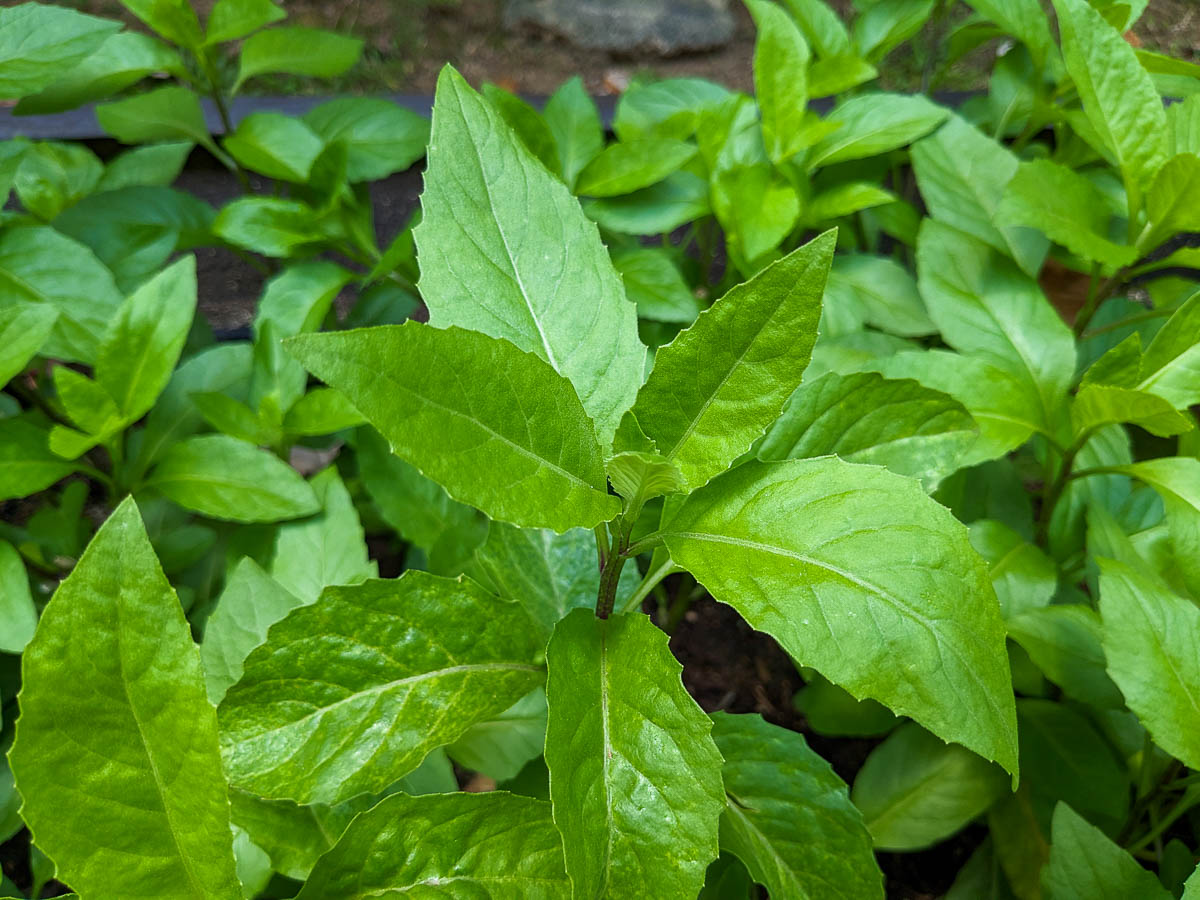Longevity Spinach
Longevity Spinach (Gynura procumbens)
Other common names: Longevity Spinach, Scrambling Gynura, Sambung Nyawa, Cholesterol Spinach, 平卧菊三七, 尖凤尾, 南非叶

Longevity spinach is a hardy, succulent vegetable that grows well in semi-shade. Its leaves can be eaten raw, blanched, steamed, and made into soup.
This plant is a small perennial crop that is easy to propagate, making it a popular choice as a groundcover, for perimeter planting, and low maintenance beds. It is also a staple crop in edible gardens and permaculture gardens.
Due to its shallow root system, these plants are a popular choice for container gardening.
A native plant, it can be found along forest streams and sandy slopes.
Sun and soil needs:
This plant grows best in 4-8 hours of indirect sunlight. Plants may suffer from sunburn in more than 4 hours of direct sunlight.
Plants do best in pots with loamy soil at least 10cm deep, or in true ground. These plants are vulnerable to root rot, so ensure that your pots drain well, and that your soil has plenty of organic matter to let the roots breathe.
Growing:
Longevity Spinach grows rapidly when young and freshly planted from cuttings. Regular harvesting will encourage the plant to grow more leaves and stems.
This plant generally does not require fertilising, but it can be fed with a high nitrogen fertiliser around once a month or after harvest to encourage growth.
Harvesting:
Plants can be harvested for young leaves at any time. They are typically harvested continuously via the cut-and-come-again method.
Propagation:
Longevity Spinach is typically propagated via stem cuttings in soil. Cuttings rooted in water are likely to rot.
Common problems & solutions:
This plant is relatively resistant to pests and disease if kept healthy.
Smaller plants may be vulnerable to being eaten by snails or birds. Protect your plants with a DIY cloche or netting.
These plants are vulnerable to sunburn in more than 4 hours of direct sunlight. Use shade netting to protect your plants or replant in a shadier spot.
This plant is especially vulnerable to root rot caused by waterlogging. It is best to grow the plant in loamy or sandy soil with plenty of soil amendments to prevent this.

